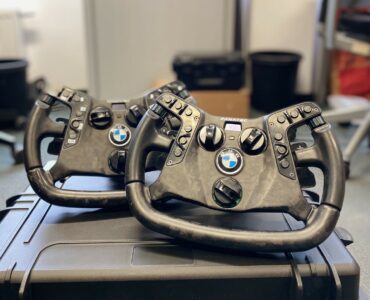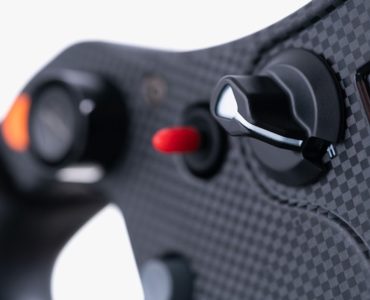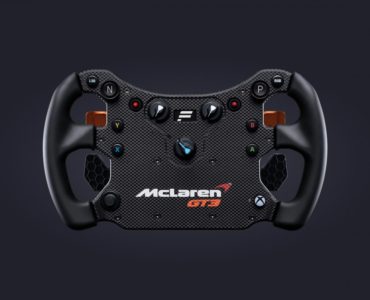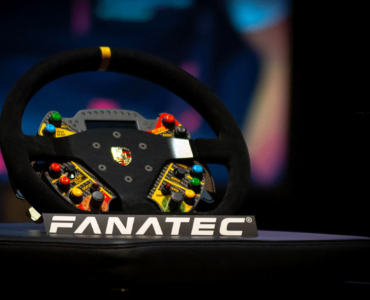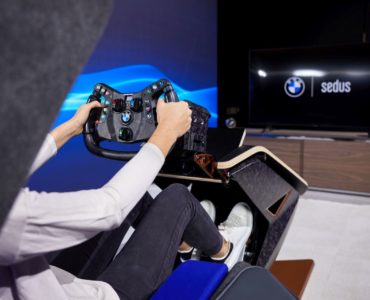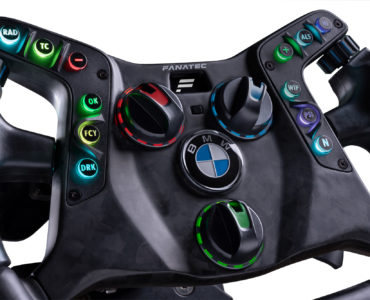 Since several drivers such as Alex Zanardi have already proven that a real race car can very well be driven using hand controls, there is no reason for disabled race fans not to become active sim racers. All it needs is a device for hand control, such as the Accessible Racing VXP Wheel Bar, which Tim Wheatly reviews in the following article.
Since several drivers such as Alex Zanardi have already proven that a real race car can very well be driven using hand controls, there is no reason for disabled race fans not to become active sim racers. All it needs is a device for hand control, such as the Accessible Racing VXP Wheel Bar, which Tim Wheatly reviews in the following article.
By : Tim Wheatley
When I first heard of a the equipment that the team at Accessible Racing (AR) were building, it took me back to one of the earliest simracing controllers I owned and a race at Monaco in the Papyrus-produced title Grand Prix Legends.
I had my wrist in a cast and at the time drove with a Thrustmaster steering wheel. There were no pedals with the wheel and I used the analogue (controller not only detects input, but how much input) paddles on the back of the wheel for throttle and brake, using buttons on the front to shift gears. I ran that race in a little pain by the end, but after resting my bad wrist onto of the other and basically racing with my arms crossed the whole time, I felt like I had climbed a mountain simply being able to race at all. It was a challenge and I felt I beat it???
For fans of racing that have Spinal Cord Injuries, almost everything they do is a challenge of copious proportions: Race tracks which I have visited (among them Spa-Francorchamps ??? Belgium, Lime Rock Park ??? USA) provide very little accessible fan areas for wheelchairs and it is sad to see because if you go to most oval tracks (Pocono ??? USA, Talladega ??? USA) or even any other sporting venue (Soldier Field ??? Chicago, Fenway Park ??? Boston) it???s very clear to see that they???ve tried hard to not only make the venue accessible to fans; they???ve set aside some very good areas!
Why is it that racing is one of the least friendly sports to these fans? Why is it that even as Alex Zanardi proved that a hand-controlled car can win, we still see so few avenues for disabled (or rather, upper-body able) drivers to get behind the wheel?
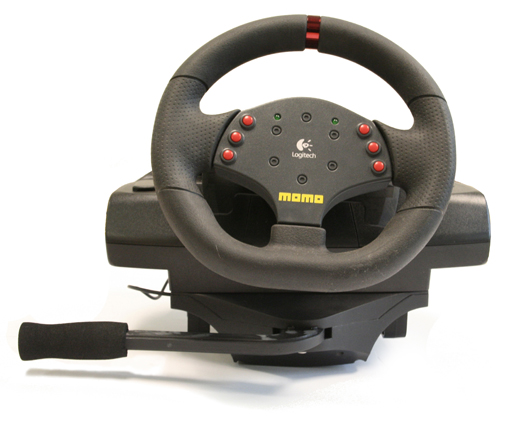
Without people like Accessible Racing (who put people in specially modified real racecars), there???s really no way to do this ??? until now ??? because Brian Hanaford (who suffered a brain injury at age 18, forcing him to re-learn basic motor skills) and his team at AR have created a new hands-only steering wheel. The wheel closely replicates methods used in some road cars, meaning that not only can some of these fans get on the real track with AR, they can spend time on the virtual one, too.
Control Method
The new device attachment is basically a bar which extends out from the base of the wheel to the left side. Because of the G-forces involved in racing, your weight (including your arms) are thrown forward under braking, it makes sense to setup the controller so that you push to brake and pull to accelerate so that you are not made to accelerate when you intend to brake. It is possible that some road cars have this setup the opposite way around (manufacturers make the same error with sequential gear shifters, too), but the G-forces experienced on the road do not match those of the race track.
You have the option to push or pull the lever either way, it depends how you set it up inside the software you???re racing with, but push-to-brake, pull to accelerate is more realistic.
Construction
The controller itself seems to be rigid plastic construction. It feels quite solid and I don???t think I???d be too concerned of breakage. It is attached to the bottom of a Logitech Momo and I am told it will not work with any other wheel (though from the attachment type I saw, it should plug into the pedals port on the base of any recent Logitech wheel???s pedal port). The unit is attached to the wheel by its clamp and comes with its own clamp suitable for desks or at-home racing cockpits beneath.
Precise Control
The movement is analogue and allows a varying degree of throttle/brake input. Pushed fully forward you???re at maximum braking and as you pull it back the braking force reduces to nothing, then as you pull past the center the acceleration increases from nothing until you reach the maximum point you can pull the stick back to. The stick does spring back to the middle (where it does not input either throttle or brake) when released.
I am far more precise with my hands than with my feet on pedals and I actually found myself driving in a way which gave the cars greater stability. I felt forced to get all my braking done before I turned and felt more able to make tiny adjustments to the throttle as I rounded the turns??? On certain tracks I actually set my best ever lap time using the controller, but I think it???s greatest benefit was with my overall consistency due to that extra bit of fine adjustment from my hands versus my feet on pedals.
Controller Issues
You are limited to turning only 190 degrees left and 80 degrees (with comfort) to the right. You need to have a hand on the throttle/brake at all times and this means you???re unable to cross arms or turn past the location of the bar. Of course if you are only racing on oval tracks, you don???t need to worry about this because the amount of turning lock available is plenty.
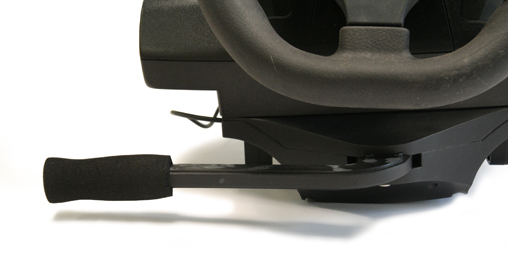
The increased height of the wheel with the controller underneath forced me to reduce the height of my steering mount. Not a big deal, but I normally have my wheel mounted fairly high ??? almost enough to show over the bottom of my screen (where the cockpit wheel shows).
It is quite difficult to shift gears. I wound up using the paddle on the back of the wheel (right side) to shift up and a button on the front of the wheel (right side) to shift down with my thumb.
Working With???
If the wheel being used (the one shipped was a Logitech Momo), has the ability to do so, you should limit its turning to a total of about 180 degrees within the Logitech Profiler software. This is due to the issue mentioned above where you are unable to physically turn right with one arm past about 80 degrees.
Always short-calibrate the controller (don???t push the bar fully to its boundaries when being asked to show software where its limits are). This will give it a little bit of movement that still gives you 100% throttle/brake so you can have an occasional flinch or loss of grip on the bar without losing any input.
Force feedback should be turned either off or very low. The throttle and brake are now attached to the wheel and if you are on the limit, you don???t really want a shock wave to travel through the wheel and force you to apply more throttle than you intended to. I did find myself getting more used to this though and could eventually drive at my regular strength, but I think gradually building that strength may be a good idea.
Conclusion
I can???t help wondering if it wouldn???t be simpler and cheaper just to buy a joystick and have exactly the same effect. The forwards/backwards axis would be calibrated in exactly the same way, while the left/right axis would be ignored by the software???
At this time, the organization sells the product complete with steering wheel, which I believe is probably good for some, but not for all. I would think allowing people to just purchase the unit without steering wheel would be a more profitable way to do things as it also does not restrict the wheel the device can be used with. I certainly think that based upon conversations I have had with iRacing members, this would be a definite requirement for some of them to buy it. It???s also probably a good idea for them to construct a USB compatible standalone device so that they no longer have to rely on having the exact wheel Accessible Racing choose.
Overall this is a good and solid piece of kit that fulfills its promise and hopefully will do so for quite some time. I am delighted that an organization has chosen to create a controller specifically for this purpose. There are others out there (Thrustmaster still offer wheels with analogue paddles behind the wheel) which could be used as a hands-only controller, but the fact that this one is designed around a recognizable method which matches one seen in road cars means that people who will never get to sit in one of Accessible Racing???s adapted cars will still feel right at home infront of their home computer and the iRacing.com simulation.
Pros
- Matches controllers seen in Accessible Racing’s race cars.
- Almost forces you to drive with good practices.
- Well-enough constructed to last a while…
- Perfect for oval racing.
Cons
- Would like more choice on wheels.
- Cheaper ways to do this.
- No USB option.
- Won’t work so well on a clockwise roadcourse.
Rating: 80%
Price: $350 (with racing software $450). Purchase from: Accessible Racing



